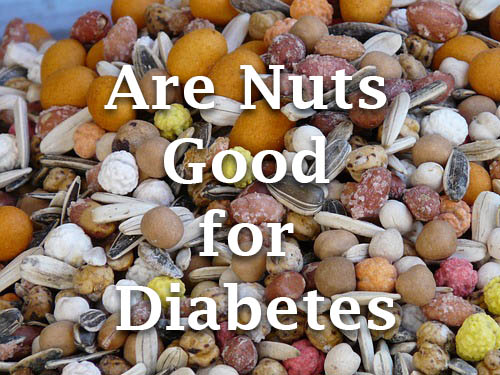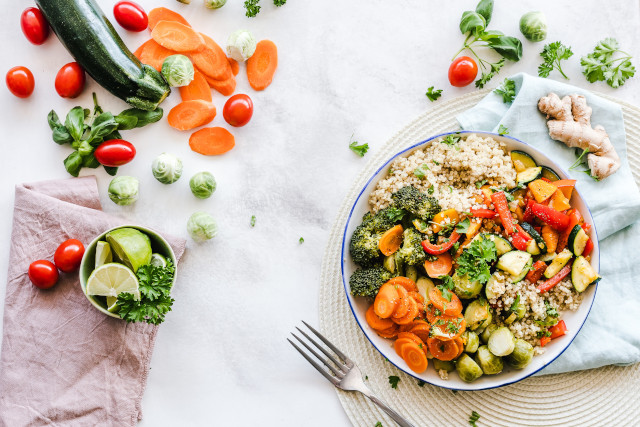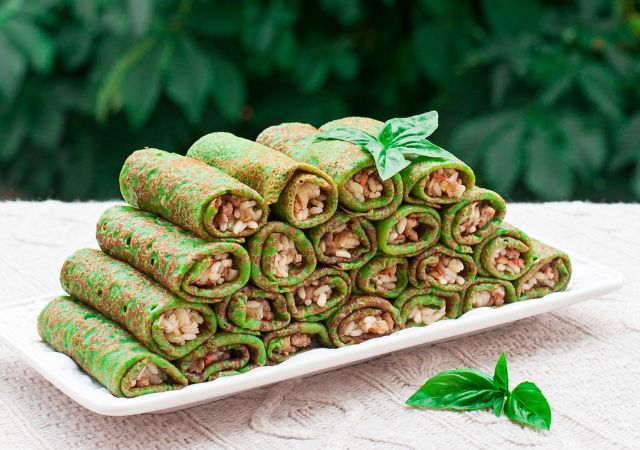
Nuts! Can nuts help prevent diabetes? Can nuts help control diabetes? Are nuts a healthy snack or just another fad? Should you include nuts in your diet? The simple answer is yes—though, read on, because there are some caveats (aren’t there always…) to the simple “yes” answer.
Contents
What are Nuts?
Nuts are seeds in a hard shell and are the seeds of various trees. These nuts are commonly called tree nuts. Botanically, nuts are also those where the shell does not break apart to release the nuts—these shells have to get broken to free the nut. However, for the sake of this article, the more general use of nuts—those in hard shells that need to be broken (chestnuts and hazelnuts) and other nuts that technically are legumes (like the peanut) and seeds (eg. Pecans, Almonds) are included. Some of the more common nuts are:[1]
- Hazelnuts/Filberts
- Brazil nuts
- Almonds
- Cashews
- Chestnuts
- Peanuts
- Pine nuts
- Walnuts
- Macadamia nuts
- Pistachios
- Coconuts
- Acorns
The USDA’s “Choose My Plate” program designed to help people make healthy eating choices included nuts in the Protein Foods Group, but nuts are high in a number of other nutrients as well, including fiber, the heart healthy monounsaturated and polyunsaturated fats, healthy omega-3 fats, vitamins and minerals. Nuts are also high in anti-oxidants. One thing to note is that nuts are also high in calories.
However, while noting that, it is also important to remember that while you DO want to watch your calories, you are getting an awful lot of healthy nutrition along with those calories and are NOT getting a lot of sugars, cholesterol or unhealthy fats (the sorts of unhealthy saturated fats that can clog up arteries).
The way you can get the health benefits of nuts without paying a large “calorie price” is to use nuts as a between-meal snack and decreasing the other high-protein servings such as meat as needed.
For more information on diabetes I recommend the following articles:
Nutritional Nut Facts
A one ounce serving is about 1 handful of nuts—the number of nuts in a handful can vary from 6-9 Brazil nuts, 20-24 almonds, 18-20 hazelnuts, 9-14 walnuts, 18-20 pecans, about 50 pistachios, 16-18 cashews and about 150 pine nuts.[2] For adults, the USDA recommends 5-6.5 ounce equivalents of protein a day and nuts can be 1-2 of those ounces. By the way, an “ounce equivalent” is the term used by the USDA in place of “serving”.
Almonds
Almond trees are believed to have been first grown and harvested in China and Central Asia, though today, California is a major source of almonds. One ounce serving of almonds has:
- Calories: 160
- Fat: 14g (with 1 g of saturated fat, 9 g of monounsaturated fat and 3.5 g of polyunsaturated fats)
- Potassium: 208 mg (6% Daily Value (DV))
- Carbohydrate: 6 g with 4 g of dietary fiber
- Protein: 6 g
- Vitamins: Vitamin E (35% DV); B vitamins (B6, folate, thiamin)
- Minerals: zinc, copper, iron, magnesium, selenium and manganese
- No cholesterol, no sodium
Walnuts
Walnuts are among the oldest known tree nut food with evidence of use going back about 10, 000 years. Again, today California is the primary source of walnuts. One ounce of walnuts has:
- Calories: 190
- Fat: 18g (with 1.5 g of saturated fat, 13 g of polyunsaturated fats and 2.5 g of alpha linolenic acid, and omega-3 fatty acid)
- Sodium: 1 mg (5%DV)
- Potassium: 125 mg (4% DV)
- Carbohydrate: 4 g with 2 g of dietary fiber
- Protein: 4 g
- Vitamins: B vitamins (B6, folate, thiamin)
- Minerals: Calcium, zinc, copper, iron, magnesium, selenium and manganese
- No cholesterol
Brazil Nuts
Brazil nuts grow in the Amazon jungle and are produced today mainly but Bolivia, Brazil and Peru. In 1569 the tired and undernourished Spanish troops ate Brazil nuts and found that their recovery was rapid and complete because of the nutrients in Brazil nuts. One ounce of Brazil nuts has:
- Calories: 190
- Fat: 19g (with 4.5 g of saturated fat, 7 g of monounsaturated fat and 7 g of polyunsaturated fats)
- Sodium: 1 mg (5% DV)
- Potassium: 187 mg (4% DV)
- Carbohydrate: 3 g with 2 g of dietary fiber
- Protein: 4 g
- Vitamins: B vitamins (folate, thiamin)
- Minerals: Phosphorus, zinc, copper, iron, magnesium, selenium and manganese.
- Brazil nuts contain one of the best sources of selenium, an important mineral necessary for anti-inflammatory biochemical reactions—Brazil nuts contain almost 8 times the DV for selenium.
- No cholesterol
Cashews
Cashews also originated in Amazon jungle. Today, cashews are grown in India, Brazil, Vietnam and Mozambique. One ounce of cashews has:
- Calories: 160
- Fat: 13g (with 3 g of saturated fat, 8 g of monounsaturated fat and 2 g of polyunsaturated fats)
- Sodium 5 mg (0%DV)
- Potassium: 160 mg (4% DV)
- Carbohydrate: 9 g with 1 g of dietary fiber
- Protein: 4 g
- Vitamins: B vitamins (B6, folate, thiamin)
- Minerals: Phosphorus, zinc, copper, iron, magnesium, selenium and manganese
Hazelnuts
Hazelnuts are another very ancient crop, originating in Asia and moving to Europe and the Americas. The US, Turkey, Italy and Spain are today’s major producers. In the US, many hazelnuts come from the Pacific Northwest. Hazelnuts are also known as filberts. One ounce of hazelnuts has:
- Calories: 180
- Fat: 17g (with 1.5 g of saturated fat, 13 g of monounsaturated fat and 2g of polyunsaturated fats)
- Potassium: 193 mg (6% DV)
- Carbohydrate: 5 g with 3 g of dietary fiber
- Protein: 4 g
- Vitamins: Vitamin E (20% DV); B vitamins (B6, folate, thiamin)
- Minerals: zinc, copper, iron, magnesium, selenium and manganese.
- Hazelnuts are excellent sources of manganese, providing 90%DV. Manganese is a trace mineral required for a number of antioxidant and anti-inflammatory biochemical reactions
- No cholesterol or sodium
Macadamia Nuts
Macadamias used to be grown as ornamental trees until someone tasted the nut…the rest, as they say, is history! One ounce of macadamia nuts has:
- Calories: 200
- Fat: 22 g (with 3.5 g of saturated fat, 17 g of monounsaturated fat and 0.5g of polyunsaturated fats)
- Sodium: 1 mg (0%DV)
- Potassium: 103 mg (2% DV)
- Carbohydrate: 4 g with 2 g of dietary fiber
- Protein: 2 g
- Vitamins: B vitamins (B6, thiamin)
- Minerals: Phosphorus, zinc, copper, iron, magnesium, selenium and manganese.
- No cholesterol
Pecans
Pecans are famous in Southern pecan pies—possibly because this tree nut is native to the Americas. Both George Washington and Thomas Jefferson grew pecans—George Washington is reported to have always a few pecans in his pockets! One ounce of pecans has:
- Calories: 200
- Fat: 20g (with 2 g of saturated fat, 12 g of monounsaturated fat and 6 g of polyunsaturated fats)
- Potassium: 116 mg (4% DV)
- Carbohydrate: 4 g with 3 g of dietary fiber
- Protein: 3 g
- Vitamins: Vitamin E (2% DV); B vitamins (B6, folate, thiamin)
- Minerals: Calcium phosphorus, zinc, copper, iron, magnesium, selenium and manganese.
- No cholesterol or sodium
Pine Nuts
Pine nuts were a staple in Greek and Roman cuisine as well as serving as a staple for Roman legions. Pine nuts are also known as Indian nuts, pinon and pignolia. Chinese pine nuts have a stronger flavor when compared to Mediterranean pine nuts. One ounce of pine nuts has:
- Calories: 190
- Fat: 20 g (with 1.5 g of saturated fat, 5.5 g of monounsaturated fat and 10g of polyunsaturated fats)
- Potassium: 169 mg (4% DV)
- Carbohydrate: 4 g with 1 g of dietary fiber
- Protein: 4 g
- Vitamins: Vitamin E (20% DV); B vitamins (folate, thiamin)
- Minerals: Phosphorus, zinc, copper, iron, magnesium, and manganese.
- No cholesterol or sodium
Pistachio Nuts
Remember those red- stained fingers from eating pistachios in the old movie theaters? Well—they are not actually red! That was a dye that was used to make them….well, something(...we can only guess..) They are old however: pistachios were one of the earliest trees to be cultivated – they were cultivated originally—or at least as far as we know—by the Sumerians and the Babylonians about 9000 years ago. Most pistachios available today come from California. One ounce of pistachios has:
- Calories: 160
- Fat: 13g (with 1.5 g of saturated fat, 7 g of monounsaturated fat and 4g of polyunsaturated fats)
- Potassium: 285 mg (8% DV)
- Carbohydrate: 8 g with 3 g of dietary fiber
- Protein: 6 g
- Vitamins: Vitamin E, Vitamin A, Vitamin C; B vitamins (B6, folate, thiamin)
- Minerals: Calcium, phosphorus, zinc, copper, iron, magnesium, selenium and manganese.
- No cholesterol and minimal sodium (2 mg)
Nuts are HIGH in Antioxidants
Beyond these commonly given nutrition facts, nuts as a group also is high in plant flavonoids (antioxidants, anti-inflammatory agents), plant sterols (known to benefit heart health) and plant proanthocyanidins (also antioxidants and anti-inflammatory agents).[3] Flavonoids are also being investigated as anti-cancer agents, both for prevention and for treatment.
But….are Nuts Good in a Diabetes Meal Plan?
Yes—overall, nuts can—and should—be included in your meal plan—and you don’t need to worry so much about the calories in nuts (just in case you were worrying). There are a number of reasons not to place too much emphasis on calories. First- these are healthy calories, not “empty” calories. Second, the fats that are responsible for a significant portion of those calories are healthy fats—and can help prevent heart disease, stroke, high blood pressure and overall mortality. [4]
In addition, a recent large study—a meta-analysis of many other studies—indicated that eating tree nuts can improve the control of blood sugar in people with diabetes. The study was limited by the fact that many of the studies that were included were small and not of high quality, but that is exactly the advantage of a meta-analysis. In some ways, a meta-analysis is designed to be a way to statistically “smooth out” less than perfect data and “root out” the underlying information.[5] Other studies have indicated that including walnuts in the diet reduces the risk of diabetes in women.[6]
Not all nuts are created equal—regarding diabetes, walnuts and pistachios are among the best studied. In fact, pistachios have been shown to lower the risk of diabetes in those already diagnosed with prediabetes.[7] However, it is likely that mixed nuts or just your favorite nuts will be beneficial, so there is no need to worry about which specific nut is best—they are pretty much all great to include in your diet.
So, how much is enough? Most of the studies have looked at the benefits of including 1 handful of nuts every day. You can stick with walnuts and pistachios, but you can also try any of the tree nuts or just used mixed nuts. A handful of nuts, remember, is only an ounce of nuts—and is under 200 calories. For most people, this should be relatively easy to incorporate into their diets. The current wisdom is that the benefits of a handful of nuts a day for heart health, blood pressure and glycemic control of diabetes outweigh the calorie number. So, go nuts!
If you want to post any recipes based on nuts post them down below.
TheDiabetesCouncil Article | Reviewed by Dr. Christine Traxler MD on June 10, 2020
References
- http://www.nourishinteractive.com/healthy-living/free-nutrition-articles/121-list-seeds-nuts
- http://www.nuthealth.org/themes/nuthealth/docs/inside_nuts.pdf
- http://www.nuthealth.org/assets/Uploads/Flavonoids-and-Phytosterols-in-100g-of-Tree-Nuts-10-15.pdf
- Afshin, Ashkan, et al. "Consumption of nuts and legumes and risk of incident ischemic heart disease, stroke, and diabetes: a systematic review and meta-analysis." The American journal of clinical nutrition 100.1 (2014): 278-288.
- Viguiliouk, Effie, et al. "Effect of tree nuts on glycemic control in diabetes: a systematic review and meta-analysis of randomized controlled dietary trials." PloS one 9.7 (2014): e103376.
- Pan, An, et al. "Walnut consumption is associated with lower risk of type 2 diabetes in women." The Journal of nutrition 143.4 (2013): 512-518.
- http://care.diabetesjournals.org/content/37/11/3098





